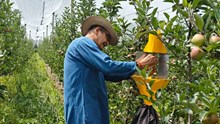
Makhana, though widely celebrated as a superfood in global health circles, is often misunderstood and mislabeled as lotus seed, fox nut, or water lily seed. In reality, it is the popped kernel of the gorgon nut, derived from the Euryale ferox plant, which is distinct from lotus (Nelumbo nucifera) and water lily (Nymphaea species). Native to India and processed traditionally in Bihar, makhana holds cultural, nutritional, and mythological significance. Its unique identity, preparation method, and health benefits set it apart, making it a valuable and culturally rich superfood rooted in Indian heritage.
Botanical Identity Crisis: Makhana is not a lotus seed
True lotus seeds come from the plant Nelumbo nucifera, which is sacred across many Asian cultures and is visually recognized for its stunning, symmetrical blooms. Makhana, on the other hand, comes from the Euryale ferox plant, which belongs to the same plant family as lotus, the Nymphaeaceae family, but differs entirely in genus and species.
If you've ever mistaken makhana for water lily seed, you're not alone. Water lilies belong to the genus Nymphaea, and while they also fall under the Nymphaeaceae family, they are botanically distinct from Euryale ferox. So, although makhana shares a distant family relationship with water lilies and lotuses, it is a unique plant in its own right. This confusion often arises from the fact that all three are aquatic plants with floating leaves and edible seeds.
So What Exactly Is Makhana?
Makhana is the popped kernel of the gorgon nut, which is the seed of the plant Euryale ferox. This plant thrives in still, freshwater ponds and wetlands, producing thorny, floating leaves and violet-blue flowers. Native to the Indian subcontinent and parts of East Asia, Euryale ferox seeds are harvested, dried, and then processed into the white, fluffy snack we know as makhana.
This “popping” process is quite labor-intensive. Farmers manually collect the seeds from the water, dry them under the sun, roast them, and then crack open the hard shell to extract the white kernel. Only after further roasting and popping does the final edible product emerge. While the plant may grow in other parts of Asia, the traditional knowledge and technique required to pop makhana are preserved and practiced almost exclusively in India, particularly in Bihar’s Mithilanchal region.
Why Fox Nut Is a Misnomer
The name "fox nut" is widely used in English-language branding and commerce, but it is scientifically incorrect. The actual fox nut comes from a different plant altogether. Makhana is more accurately called “gorgon nut” based on its source plant, though this too has a curious history.
The term “gorgon” has roots in Greek mythology. The three Gorgon sisters, Medusa, Stheno, and Euryale, were fierce and powerful, with the ability to turn onlookers to stone. The name Euryale ferox itself is steeped in this mythological association, perhaps reflecting the thorny, armored leaves of the plant and the resilience of the seed. Some historians even speculate that the Sanskrit root "garğ", which describes a fierce or formidable entity, could have influenced the naming.
Makhana: A Culinary Jewel of Mithilanchal
In the fertile plains of Mithilanchal, Bihar, makhana is more than just food, it’s a part of life. It features in weddings, religious offerings, and ancestral rituals. Locals proudly say, you’ll find makhana either in heaven or in Mithila.
This cultural reverence has helped preserve the traditional processing techniques over generations. Despite technological advances, most of the work, from harvesting to popping, is still done by hand. Women play a significant role in this chain, contributing to household incomes and preserving indigenous knowledge.
Interestingly, though the plant grows in countries like China, Japan, and Korea, those regions typically consume the seeds raw or boiled. The popped version, light, crunchy, and nutritionally superior, is a specialty developed and perfected in India.
Pop It, Don’t Puff It: Understanding the Processing
Another common mix-up in the world of food science is the use of “popped” and “puffed” as interchangeable terms. When it comes to makhana, it is popped, not puffed. The difference lies in the method of processing.
-
Popped: The entire seed, including the coat, is roasted until it bursts open, revealing the expanded white kernel inside. Makhana is a perfect example of this.
-
Puffed: The seed or grain is roasted without the outer coat, typically using dry heat or air pressure. Puffed rice is the classic example here.
The popping process used for makhana is closer to how popcorn is made than to how puffed rice is created. This distinction matters not just linguistically but also nutritionally and culturally, as popping often retains more fiber and nutrients.
A Superfood Rooted in Science and Culture
Makhana isn't just a trendy snack, it’s loaded with health benefits. Rich in antioxidants, low in calories, and high in magnesium and protein, it is a diabetic-friendly, gluten-free food that suits almost every diet. It’s also part of Ayurvedic recommendations for its cooling and anti-inflammatory properties.
Despite these health benefits, what makes makhana truly special is its unique intersection of science, tradition, and cultural identity. From the mythological allure of the gorgon sisters to the muddy waters of Bihar where women skillfully extract and pop each seed, makhana is a product of resilience, heritage, and innovation.
So the next time you munch on a handful of these airy, crunchy delights, remember, you’re not eating lotus seeds, fox nuts, or water lily kernels. You’re enjoying the ancient, cultural superfood that is makhana, India’s very own popped treasure.
















